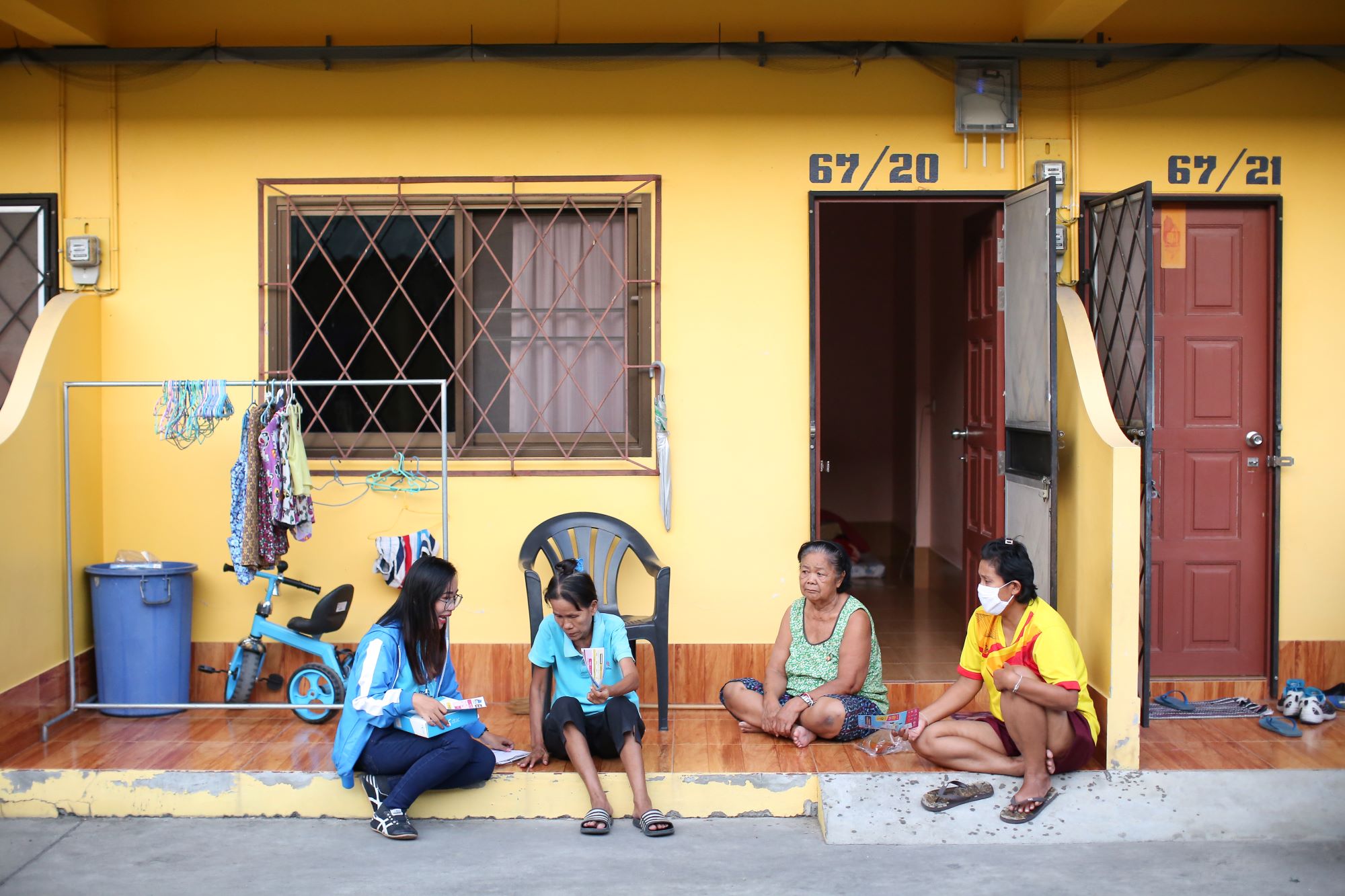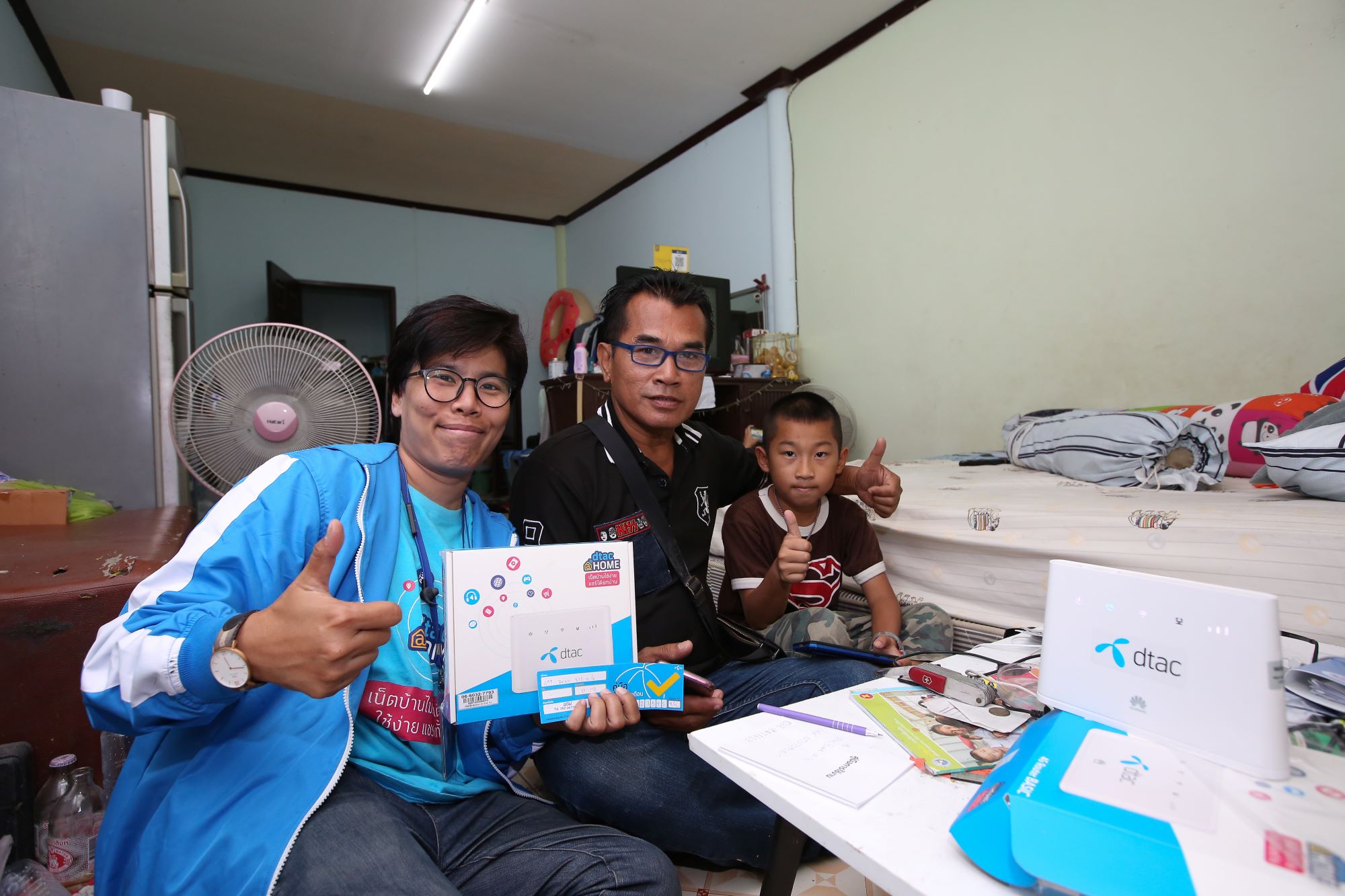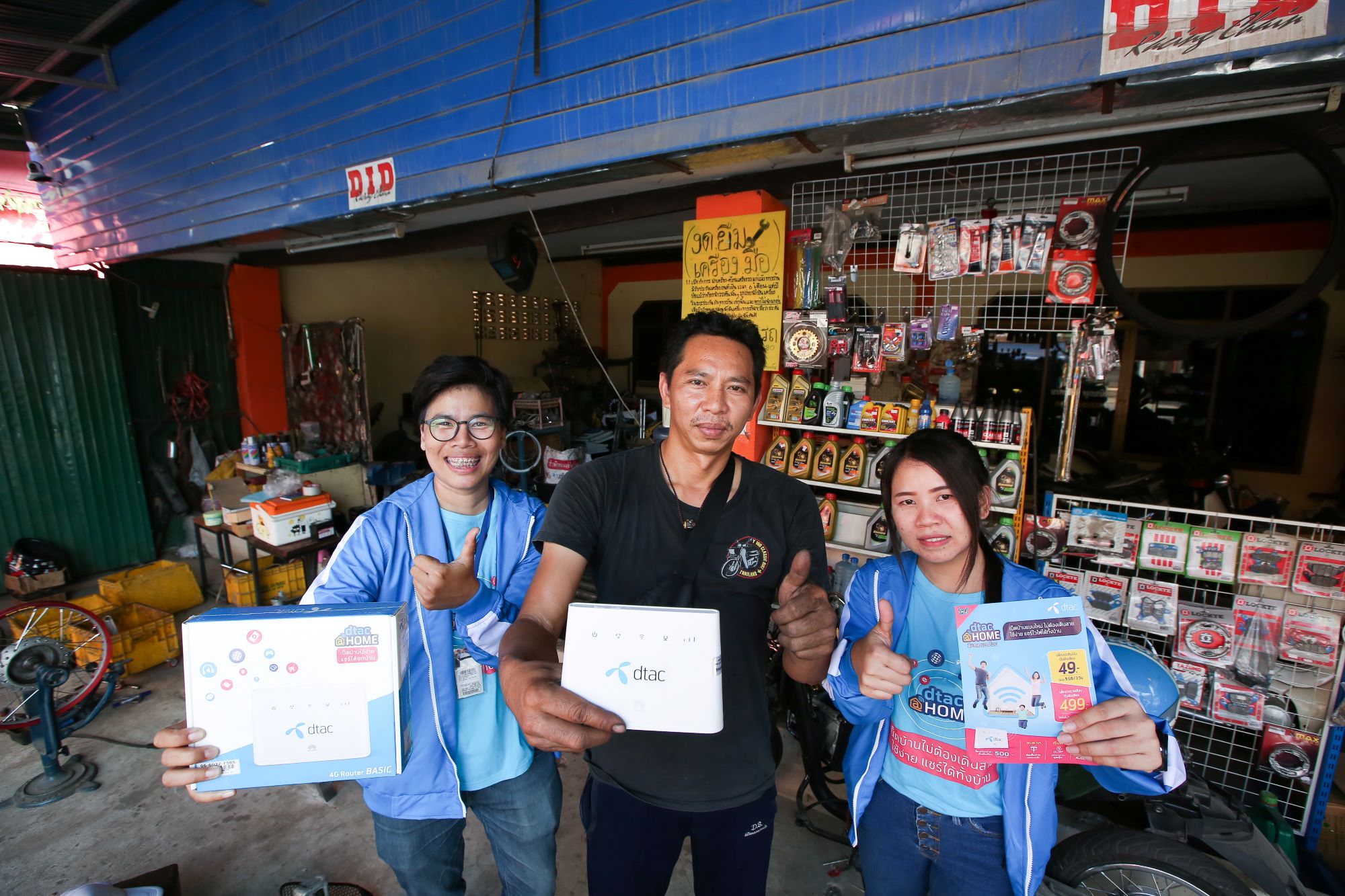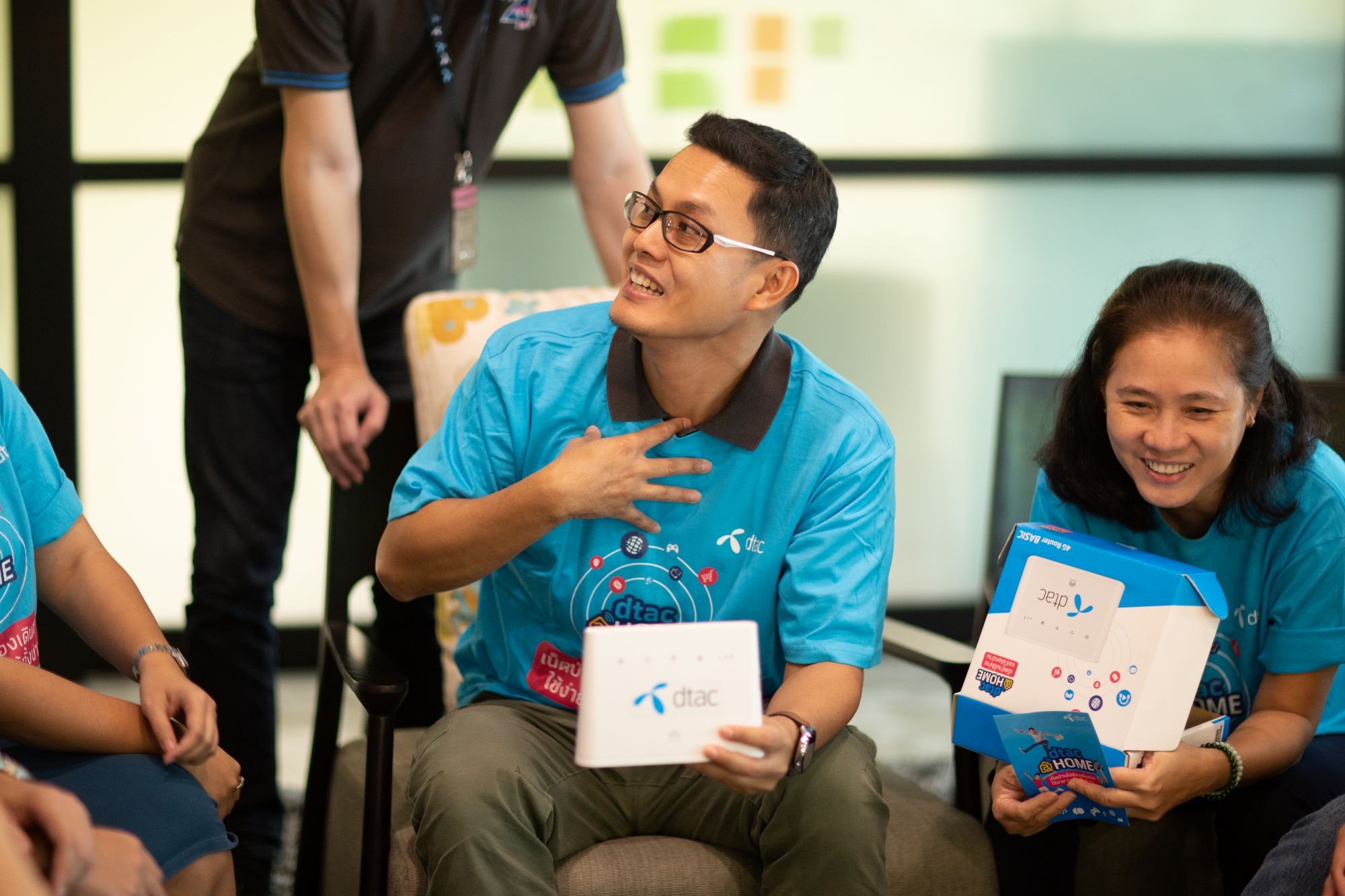dtac@home bridges the divide between high mobile penetration and unconnected homes.
It’s a hot Friday morning when we accompanied the dtac@home sales reps to walk the streets of Chonburi. Everyone here has a smartphone—even kids have them. But most homes are otherwise missing basic home internet.
The issue can be cost or just the slow, cumbersome process of subscribing to a wired broadband connection. There’s therefore no Wi-Fi for kids to use a laptop or tablet. Nor can TVs do online streaming. It’s all mobile or nothing.
“Unconnected homes are typical of the growing digital divide in Thailand. Smartphone penetration is over 81 percent and, at 11Gb per month, data consumption dwarves that of many mature markets. But at the same time, many basic digital services remain too costly and too complicated,” says dtac@home product owner Krystle Ramos.

dtac is bridging this digital divide with wireless home connectivity solutions, easy digital farming solutions and a connectivity platform for smarter electric motorcycles—three products that bring convenience to the many rather than the few. Of the three, dtac@home is the closest to a national commercial launch.
dtac@home trialed initially in Chonburi, Surat Thani and Songkhla. Using a router, it creates a Wi-Fi hotspot without the need for wiring. The router is instead connected to the dtac 4G network. Users can even move the router around the house.
“People appreciate how easy it is to set up and use,” says Ms. Ramos. “Of course, our customers already have mobile devices, but they still need a solution that delivers a strong Wi-Fi signal and an affordable unlimited data plan. They can stream music and video to their TV and share internet with their whole family.”

dtac@home was developed using agile methodology. This new way of work calls for plenty of experimentation, and very fast, incremental rounds of improvements to put the customer at the heart of the product every step of the way. The objective isn’t to make the perfect product. Instead, the team aimed to make the product viable with a scalable business mode, and then constantly improve it thanks to customer feedback.
“dtac@home was originally only a postpaid model. But we realized some people need even more flexibility than we anticipated. They just don’t want to get tied down by bills or they are concerned about their income being too irregular. So we will now experiment with a prepaid solution, which would be a first in Thailand for wireless broadband at home,” says Ms. Ramos. “It’s only by being agile that we can quickly react like this to what customers are telling us.”
With 5G on the horizon, telcos are looking well beyond supplying their customers with mobile coverage. Wireless broadband at home will be a key 5G use case, bringing fast-speed internet to more homes in Thailand. The dtac@home project is therefore not only practical in its current state, but it is critical to assess the potential of 5G services.



